Robot Combat League (Syfy, Tuesdays, 10/9C) is not your average reality competition series. Syfy has taken a page out of the anime/manga/movie playbook and is premiering an unscripted competition series featuring combat between giant robots – remotely piloted by a team composed of a jockey and a tech. Think Real Steel – only for real.
Series host/commentator, WWE star Chris Jericho and Mark Setrakian, the man who created the twelve robots that compete on RCL, spoke with a group of bloggers/journalists – on Valentine’s Day of all days – about the series. Note: Jericho actually spoils one bout – but it sounds so cool that it probably won’t matter…
Hi guys, thanks for doing the call today.
Mark Setrakian: Sure. Hi, how are you.
Chris Jericho: (Unintelligible).
Setrakian: Happy Valentine’s Day.
Happy Valentine’s Day to both of you. So I wanted to know, is there a specific reason that you chose specific robots for each team? Can you kind of talk about how that went.
Jericho: Yeah, I think it was kind of – I don’t think we really placed, you know, this robot will go with this team, and this robot will go to that team. I think it was more just kind of a luck of the draw thing. But what we started to find out – the cool thing about the show is that it’s never been done before ever. In any way, shape, or form. Especially with robots of this size and this technology.
So each robot had some pros and cons to it as far as the way it was designed, the way that it looked. I mean, all of the designs were the same but as far as the actual skins that we put on them, some of them had different types of fists, or different types of armor, or whatever it may be.
So as the competition moved forward, you saw how the teams were really starting to bond and meld with their specific robot. And knowing what we could do with what we have and the other robots don’t have. And what we have to protect that might be a little bit of a weakness. And that was something that we never really (unintelligible) to see how the teams gelled with the robot as the competition moved forward.
Setrakian: Yeah, and the technology of the robots is such that the personalities of the contestants really comes through the robots themselves. We really started to recognize specific fighting styles that the robots had that was really coming directly from the contestants.
Okay, great. And why did you each decide to get involved with the project?
Setrakian: I’ll take that one first.
Jericho: Sure, go ahead.
Setrakian: So, I had my first introduction to Craig Plestis, who is the executive producer of the show, almost exactly two years ago. And at the time they had a vague idea of doing a robot combat show with giant humanoid robots. And I had a meeting with (Jeremy Woodum), was working for Craig, and it seemed like the most audacious, challenging, just completely off the chain project I’d ever heard of. And I was in. I couldn’t not do it.
Jericho: And for me it’s like, you know, when things come across your desk on a daily basis, weekly basis, some of them are good, some of them are bad, some of them are kind of generic, some of them you’ve seen before, and some of them are so unique, and original, and interesting that you just can’t not be curious about it. And when you hear – here’s a show they want you to host that’s about eight foot tall giant fighting robots. It’s kind of something that you can’t just go, “Oh, I pass.” It’s like, “What is that?”
So to actually hear the concept of it, which is really cool, but then actually go and see these robots. See how they move, like how fast they move, how hard they punch, how much mobility they have, or how much personality each robot has, it really blew my mind. (On) the first day when I was there on set and they, you know, go into the arena and have a robot walk towards me. Had it not stopped I would have turned and ran away. That’s how intimidating it was, you know?
And to see like actual giant robots that can walk and fight. If you get hit by one of these robots, they have 2,000 PSI of punching power, it can knock your head off. So we’ve actually – Mark has actually created robots that can kill you. So in 10 or 15 years, when these robots take over the entire human race, you’re going to know that you saw them on Syfy first. We got them first baby.
Setrakian: The robot apocalypse. You know, let’s all just be very cautious about the robot apocalypse. Look, I’m trying to keep them under control man. So, you know.
What do you think it is about the concept for this show that will really bring in some viewers?
Jericho: About the concept of the show? Well I think just the fact that just like I said, the tag line when you hear about giant fighting robots. Because I think a lot of people that just – there’s a lot of people that are just obsessed with robots to be honest with you. Which is something that is very cool, anything robot involved people will be interested.
But it’s more than that. It’s the fact that how technologically advanced they are, it’s a fight show, it’s a robot show, it’s a reality show, it’s a human interest show. Because as cool as the robots are, and like I said, you have to see them to believe how quickly they move and how mobile they are. But also, as Mark said earlier, to see how the people react with the robots they have, what kind of personalities can the inject into these robots, what’s their fighting style, how can you adapt to what is going on?
So it’s just very interesting basically because we have never seen anything like this before in the history of television. There’s been robot things, but not to this level, this size, and this much advanced mechanics I guess you could say.
Setrakian: Yeah, and Chris really nailed it, but the robots themselves are very cool. But without the contestants they’re really nothing. It’s kind of like a car without a driver. And it’s that synergy of the human contestants and the robot fighters that’s really fascinating about the show.
For me, one of the most compelling images is when you see a contestant and they’re up in the tower, sort of a control tower that they operate the robots from, and they’re in the exosuit. And you see them take a swing and you see that robot take a swing, and you make that instant visual connection. It’s like, “Wow, that person is making that thing move.” And the robots do the fighting and the dying in the arena. And the humans are really the brains behind that, they’re basically transmitting their heart and soul into these machines. And it’s really amazing to watch that.
Jericho: Because what happens, as Mark said, there’s an exoskeleton that you put on. So when you punch, the robot punches at the same time. When you duck, the robot ducks at the same time. So I was kind of liking it to be like if you snowboard, or ski, or skate. When you first put this foreign appendage on it feels very strange. Then when you learn how to work it and move it to your specifications, you can ski down that hill quicker than anybody and it just becomes part of you, an extension of yourself.
And that’s what I felt for the teams as they moved forward in the competition. The robot just became an extension of the humans. And that became – it went from a two point team to a three point team. And it was the teams that worked together in a three way relationship that won the contest. It wasn’t like who’s the strongest guy, or who’s the smartest person? After a while it didn’t matter, it was who had the best chemistry? And that was a really cool element of the show and that really became more apparent as we moved forward episode by episode.
Setrakian: Yeah, exactly.
What are some of the most memorable moments we can be looking out for?
Setrakian: Oh man. Well the fights got more and more outrageous as the series went on. As the contestants got comfortable with the robots, just as Chris was just saying, and they became more and more capable in the arena – and also just watching each other. Teams would watch a match and they’d see something happen and they’d say, “Wow, I didn’t think that would happen.” And then they would capitalize on that and maybe expand on it.
So, I mean, by the second episode you’re going to see robots cut in half. I was shocked it was happening. I built these things and I found them shocking.
Jericho: Yeah, that was the thing, I think the cool thing about it Mark is that this was uncharted waters for all of us. So none of us really knew what was going to happen. And the fights were so intense, they kept getting better as the rounds went on. This was not some kind of Hollywood orchestration, this was real. Like what was going on was actually going on.
And Scorpio was one of the robots and had kind of a blade on its fist. It was punching Commander kind of in the torso area, the robots are connected from lower torso to upper torso with these things called actuators. One of the actuators broke, all of them broke in a domino effect and the robot was cut in two like Mark just said. Basically split right in half and fell apart.
And when that happened people went nuts. You never expected to see that. And that was probably, to me, the perfect crux of the show. If you could just show one highlight, show the scene where Scorpio cuts Commander in two. And if that doesn’t peak your interest then go watch Golden Girls reruns because we don’t want you anyway.
Setrakian: Yeah, if that doesn’t get your blood flowing the show is not for you. Definitely not.
Chris, since you’re still in the ring as a wrestler, can you actually envision a time in the future where robots could put you guys out of work? How do you see it?
Jericho: Well the thing that’s so cool about it, as I said, it’s – you know, there’s always the human element of something like that like boxing, or wrestling, or UFC, whatever. The fact that it’s actually robots doing it, and the (weird) thing about it is it’s like we’ve seen this in movies and on television for like 50 years. Since like the 60s right? And all of the stuff that was kind of predicted in those movies or TV shows is happening.
Skype is like Captain Kirk with a Klingon on his screen and talk to them, and now you can do that. Or…
That’s true.
Jericho: Right, or there’d be somebody on the planet talking to the guy on the spaceship on a tricorder. But you can do it, you can talk to somebody on a plane now using your phone. So the fact that we have these fighting robots that actually you can see, and feel, and all this other stuff. It really does blow my mind.
So someday they’re probably going – I bet you in 10 years we’ll be looking back at the first season of Robot Combat League and going, “Oh, how archaic are those robots?” Because I think it’s going to be so advanced that they might have actually robot wrestling matches.
But at that point, you know, I’ll be the host of Robot Combat League and it’ll be the biggest show in the world. I won’t have to worry about wrestling anymore. I’ll just make a robot Chris Jericho and send him to the ring anyways. Actually, Mark will make a robot Chris Jericho and send it to the ring.
Setrakian: Yeah, and it will be badass.
Well Mark, I wanted to ask you, from a technology standpoint. Is it possible to have one person to control both the punches and the foot movement? Can you talk about why you decided to have two people?
Setrakian: Well a lot of the engineering that went into this first season of the show really had to do with engineering for success. And what I mean by that is, in a car race you have the cars racing around the track. And there’s some situations where they crash and the bodies tear apart and, you know, the car fails. But it’s failing because it’s in a crash.
It’s really not interesting if the car just stops rolling and you don’t know why. It’s like, (unintelligible) or something like that. So the technology of the robots is like that. I had to basically make these things so they absolutely would not fail. And that’s one reason why I decided to split it up.
Because I thought, the amount of training that you would need to master the entire body, one person controlling the entire body, was really beyond the scope of the amount of time that we had to shoot the show. But there’s another reason, which is that it’s really interesting to actually split it up. Because you have two people, they’re interacting, their verbal interactions, their visual interactions between themselves during the show. Kind of decodes the action a little bit to the audience. It’s like, “What’s going on?” you can hear them talking to each other. It’s like, “Get in closer. No pull back.”
The other thing that’s interesting about the way this technology works is that we really wanted to have it be a pairing between an athlete and a brainiac, for lack of a better word. An athlete and a technician. And the operation of the upper part of the suit is this completely visceral input device. It’s this exosuit. You get in and you throw a punch and the robot throws a punch. And that conduit from sort of your raw emotions right to the robot, I tried to make that as transparent as possible.
The command pod, on the other hand, is a little bit more of an intellectual pursuit. You’ve got joysticks, you’ve got an algorithm that controls the walking. And the guys and girls who were really good at making that system work really understood the underlying technology. And they figured out ways to basically work the system, to get around certain limitations. To take the functionality of the algorithm and tweak it, and use it to their advantage in the ring.
And so you’ve got basically two people that are using two different aspects of the robot. And it was a much richer experience, I thought, to have it like that. Chris what was your observation of the two man team?
Jericho: Well I thought the reason for it was what he just said, to make it more of a team effort. Because I think that was a lot of the strategy of the show, was how you work with your partner. You know, they really had to work together. So it kind of went from a single boxing match to more of a two man rowing team or something. Where if you’re out of sync or if you’re not on the same page, you’re not going to go forward and win.
So there was that element with – I think maybe technically you might have been able to do it. But from a show standpoint and from a strategy standpoint, I like the fact that it was two people. Because then you have that element where it’s not just you and the robot. It was you, the robot, and some other person that you’ve never met before.
I mean, these people weren’t friends. There was one father daughter team but the rest were just people that were paired together. As interesting combinations, who’s going to get together first and go the farthest? I thought that was a real interesting part of the show a well.
Setrakian: Yeah, that’s right. Watching them make that bond, and some of them really bonded and some of them really didn’t. That was a fascinating part of the show.
Mark, I wanted to ask, some of your contestants had some prior experience with robots. Specifically (Dennis) Shensel – or Dave Shensel. And I’m wondering if he had a leg up because of his work building robots prior to Robot Combat League? Or did that not play a part?
Setrakian: Well actually there were a number of contestants that had prior experience with robotics. Paulo Younse, for example, works for NASA. He created, was one of the engineers that developed the Mars Rover that’s doing such amazing things right now.
I think that all of the techs had, and this was deliberate, all of the techs had some kind of technical experience. And the most important thing, is just being able to look at the robot and say, “Okay, I know the basics. I know the nuts and bolts. I understand how hydraulics works, I understand how electronics works.”
They all had that underlying experience. The technology of the RCL robots specifically, is different enough from what any particular person has worked on in the past. And I would say definitely in the case of Dave, it did not give him an advantage. All of the contestants had, I think, an equivalent level of technical proficiency…
Jericho: All of the robo-techs, there’s robo-jocks and robo-techs, which are basically the guys or girls that ran the movement of the robots. They were all, like you said, at a certain level of technological advancement. Much smarter than I would ever be. They were talking stuff I never understood what anybody was saying. But they definitely knew what they were talking about.
I remember Ross Mead at one point went into the software and tried to reprogram some things to get his robot to move quicker or something along those lines I remember. So, it’s like, I think once again that they all had pros and cons as robots and they all had pros and cons as humans that, you know, helped them go further in the contest or that ended up causing their demise, you know?
Setrakian: Yeah. In fact, I would say that at the outset Dave kind of sucked. He didn’t really – it took a while for them to really get into the swing of the robots. But they did, you know?
Jericho: Yeah, they got into it, right.
First I’ll start with Chris Jericho. First, I’m a big fan of yours and on Monday night you had a great match with (Daniel Bryan). I’m wondering is something like Robot Combat League maybe Jericho’s transition to Hollywood?
Jericho: Well I mean I’ve been doing stuff for the last basically ten years that kind of, I guess, transitioned. It’s more just branding. It’s like the Chris Jericho brand at this point. I just do things that I find are interesting to me. And I think that I’ll always do that. I’ll always come back to wrestling for short periods of time as long as I can perform at the highest level that I’ve kind of set the standard of doing. But there’s so much other stuff that I’ve done from RCL to Dancing With the Stars, to Downfall, to MacGruber, to touring the world with Fozzy and doing all the stuff I’ve been doing with the band. You know?
So that’s why Robot Combat League was so interesting to me. Because I enjoy – people say to me, “What’s your goals? Do you have any other goals?” I never had the goals, you know, I want to do this, I want to do that, I want to host a giant fighting robot show, and I want – it’s like, when it comes across your desk, if it’s something interesting I’m going to do it. And I’ll continue to do that until the day I die.
Because that’s what I do. I’m an entertainer and I enjoy being in front of the camera. I enjoy having new challenges and learning. I learned a lot from RCL about technology and about a lot of different things. So I guess you’d say, yes, transitioning into whatever it is. Go to Hollywood or just transitioning into another form of entertainment, but I’ve been doing this for the last 10 years or so, different things. If it’s interesting to me I’ll give it a try for sure.
Okay, and now you’re calling the play-by-play while the robots are fighting. Can you describe maybe the show’s set up? Does it start off like maybe getting into the back story of the contestants? And maybe how the robots are built? Or…
Jericho: Yeah, basically what we do is that it’s a nine episode arc and it’s like any other season of a show. The first show we’re finding out who all these people are and what’s going on, and how they’re learning to operate their robots, or the fighting with the robots. And then we add a little bit of a completion to seed the contestants, the teams. You know the first seed goes against the twelfth seed and so on and so on.
And then the battles start. And when the battles start, the fight starts, there are three 2-minute rounds. And like I said, when I first heard about this I even said to one of the producers, “Well how is it going to fight? Is this going to be like Claymation fight? Like very slow and walky and stutters? Or is it going to be like a rock ’em sock ’em thing? Where it’s like you hit me, I hit you, you hit me, I hit you?” And he’s like, “No, you’ve got to see this.”
And when I started watching the fights they were so exciting, and so intense, and so violent. I mean there is sparks flying, and fire going off, and smoke, and hydraulic fluid, the lines would get severed or snapped and this fluid would be shooting everywhere like arterial blood. It was like watching the opening scene of Saving Private Ryan where all you’re seeing is explosions and bombs, and decapitations, amputations, and that’s what we were seeing.
So when that was going down – and when the round is done it’s almost like a NASCAR pit crew. (Unintelligible) the tech and the jockey come down and assess the damage to the robot and they have 30 minutes to get the robot back to the battlefield. If they can’t do that they lose a point, again, I think it was like two hours to get this robot operable again. If you couldn’t do that, you were done. It was a technical knockout.
If you can only fix one arm and the other arm was dangling, you had to go back in and fight with one arm. So you kind of see the arc of the beginning, the middle, the fight, in the end it’s who won the match. If there isn’t a knockout or TKO then we have actual, legit, respected boxing judges who scored the rounds and decide who they think the winner is on scores.
So that’s basically the arc of the show.
Setrakian: And to mention the judges again for a second, you know, this is kind of my first time working on a show where I’ve been meeting people like the judges who judge MMA matches and boxing matches. And I was really impressed by the people they had judging this event. They were, they immediately wrapped their heads around the technology and they applied the rules so well.
I mean the fact that we had some unanimous decisions a few times. And this is judges that are stationed all around the arena, you know, in different positions. And for them to come up with a unanimous decision, I thought was amazing that they’re all calling it the same way. They didn’t miss a thing, I was really impressed.
And it’s tournament style, so the winners face the winners further down the road. Is that correct?
Setrakian: Yeah, that’s right.
Jericho: Yeah, exactly. You know…
So after the fight does the robot get to be, obviously, rebuilt for the next match?
Setrakian: Well once they lose, depending on how badly they lost, there were a few robots that had to be scrapped afterwards. There just wasn’t enough left to put them back together. Those were the losers. The winners are repaired and, yeah, we basically get them as close to factory fresh as we can. Considering that they’ve just been in a complete wreck, like a car accident. And we get them back in the arena.
Jericho: And that was the thing too though, like when the robots first came out they were all shined and they just looked like incredible pieces of machinery. Just beautiful pieces of machinery. And then to see them just get pummeled and see them get the crap kicked out of them, I felt that it was like watching Lamborghinis in a demolition derby. It actually hurt my feelings to watch these robots get destroyed.
And I remember I even asked you one time, Mark, how do you feel about this? Like you created these beautiful things and now they’re just getting completely destroyed, and smashed, and gnarled into scrap metal. And you go, “Well that’s what they were built for.” But I just like – oh, I just felt bad to see these beautiful things get destroyed.
Setrakian: Well they have to be beautiful to begin with, otherwise – the concept of a smash up derby, you go to this thing, you look on the field and it’s a bunch of junker cars crashing each other. I mean, do you really care? I had to make them like works of art and nothing less than that would satisfy me. And yeah, they’re getting destroyed but, you know, you cared. I didn’t know you cared that much.
Jericho: Yeah. I did, but also I became attached to the robots a bit. I know the teams did, but you forgot they were robots fighting. Especially as the contest moved forward. You got a little bit attached to the different, you know, quirks of each robot. Like I said earlier, the pros and cons of each one. And it made you, like, kind of separate yourself from this is not just a piece of metal. It’s actually almost a living, breathing character on a show. And I didn’t want to see them go.
And I remember the last two that made it. They looked like they had been through a battle. They looked like the deserved a medal. Because they had been pounded out, maybe some of the dents had been, you know, pushed out. But you could still see the paint was scratched. There was other robots paints kind of scratched into theirs. And they looked like warriors, where you just wanted to give them big hugs at the end of the contest.
Setrakian: It’s so true, they’d been trading skin for God knows how long. And also it’s that thing you were talking about before where the robot has become, literally, an extension of the bodies and minds of the contestants. And I think you really start to feel that as the show goes on.
Jericho: Right, I agree.
In the movie Real Steel, which I don’t know how much direct inspiration it was, the fans of the futuristic robot fighting seem to be pretty much the same type of fans that you would see at boxing or MMA. And it was positioned as a replacement for those sports. And even in the old Twilight Zone show with Lee Marvin from ’63, the fans seemed to be boxing fans of the day. What do you see is the fan base of Robot Combat League? And how much do you think this is going to appeal to people that are currently fans of sports like boxing and mix martial arts?
Setrakian: I think that’s a really good question.
Jericho: (Unintelligible). If I could step in Mark…
Setrakian: Sure, go ahead.
Jericho: The one thing that I think about this is obviously the difference in Real Steel or Twilight Zone is that it’s something that had been going on for a while. People were used to seeing robots fight and it’s kind of, you know, was the replacement for boxing.
Because we’ve never seen this before I think it’s going to get a real cross section of different people that enjoy this show. I think more people are going to check it out because it’s robots that are fighting. We all have a fascination with robots in one way, shape, or form. There’s hundreds of movies and TV shows, you know, everyone is always interested in what a robot can do when you hear about robot arms in space, or robot drones that are delivering, you know, go check out minefields, or whatever may be.
This is so different and so advanced for people that are into that sort of thing. (Unintelligible) robot fans, the sci fi fans, people who like science fiction and have been waiting for something like this to happen. Then you have the boxing fans, there is a strategy to it. There’s also the human element of it, the personality element, the reality show element.
So there’s a lot of different people, demographics I guess you’d say, of people who’d be interested in this. Once again, it’s something completely different from anything we’ve ever seen before.
Setrakian: There’s one other element to this, all of that is really true, there’s another element to this that I know Chris and I have talked about. That there’s an element to, let’s say boxing, that some people are just not going to want to watch because they just don’t like the human violence of that particular sport. And this sport, the violence, the bleeding and the injuries, are all occurring by proxy. To these robotic (unintelligible).
And it’s really fascinating. Because even the contestants themselves are playing on a level playing field that’s really not existed before. We have huge guys fighting very small women. But they’re fighting as equals because it’s the staff of the robot that’s matched up. And the guy, he can’t just do what he’s done before and just hit harder, because that doesn’t work. And the girl, she can use strategy, she can use strength she’s never had before.
And so there’s so many other levels to this, to the completion, that I think are really fascinating that I think are going to appeal to women who perhaps have never seen a sport where women were so well represented in a mixed field. I think it could be interesting to families because it’s completely family safe, you know, it’s a violent sport. But the violence that’s occurring is like breaking your toys. Well maybe that’s not such good behavior, but we do that.
Jericho: You know what another good example of people that would be into this is the whole NASCAR kind of a vibe.
Setrakian: Absolutely.
Jericho: NASCAR is a group of guys, sometimes women, that drive a piece of machinery. And basically, okay, every car can go 100 mph, there’s no doubt about it. Some cars (unintelligible), some cars have different tires, some cars have a different pit crew that get it back up quicker. But it all boils down to who is driving the cars. And I think that’s one reason why NASCAR is so popular.
Okay, what are they doing? They’re driving around in a circle 100 times, big deal. It’s not about the driving. It’s about who’s behind the wheel, what kind of strategy are they using, what kind of (unintelligible), or technique, or tactics are they using that might not be the way they are supposed to do things? And that could go for RCL as well. I think that’s another thing that will appeal to different types of viewers.
Setrakian: Exactly, this is a new form of – it’s a motor sport and athletic sport rolled into one.
Do you think that – because it was mentioned earlier, how things that have appeared in science fiction have, you know, come to fruition in real life. Do you think that the scenario that was laid out in Real Steel, that people wanted more violence and sports like boxing, and MMA, and similar sports just became too violent for humans to handle. And either were banned or shunted to the wayside and the robot fighting replaced it.
Do you think that it’s a possible scenario, that as we understand more about issues like concussions, and all this being discussed in the NFL now, concussion, and brain trauma, and CTE. That people may, for one reason or another, move away from those type of sports. And for the reason you discussed, watch the robots fighting because nobody gets hurt. Do you think that this could replace some of those sports somewhere in the future?
Setrakian: I think that’s a really astute question. I think the issues of brain injuries, certainly in the NFL right now, it’s really a hot subject. And that is something that really can’t happen with this type of sport. Now thinking about just sport in general, you know, if you watch the Olympics – the sports that were the foundation of the Olympics in ancient times, from throwing the discus, throwing the javelin, those sports are still practiced today.
We don’t, as a culture, we don’t lose sports. We add sports. We add sports to our repertoire, so I think robot combat is a new sport that’s going to be added to, you know, to what humans do. I don’t think that boxing, or wrestling, or any of those things are going to go away. From my perspective, Chris what do you think?
Jericho: Well there’s always the human element that people are interested in. But I definitely see this becoming a viable form of entertainment. Especially like I said, you know, if you look at your cellphone 10 years ago to what the cellphones are now and the technology advancement has been ridiculous. I completely expect the same thing to happen with robots. And I think you probably will have, you know, free form standing, thinking, fighting robots. And I bet you they might even put them to war at some point.
It’s almost – it’s funny. Because the first day I came on the set, George Lucas was there. And George Lucas’ daughter was one of the contestants, she was one of the robo-jocks. She’s a MMA fighter. And I asked George, “What is this like for you to see these ideas that you had 40, 45 years ago, 50 years ago now coming true?” And he said, “It’s the way technology is moving.” He used the analogy that I just used earlier about how all of these things – a thinking, talking robot. Well I’ve got one in my phone right now.
If I want to ask Siri how to go find a burger shop, she’ll tell me. What if you combined the mind and thinking powers of Siri with the fighting and mobility powers of what Mark has created. You know, then you’ve got a walking, talking, moving, fighting robot. And if you can do that, then why wouldn’t you put them in fights against each other? And I’m not even joking, at some point wouldn’t one of those robots maybe override the system and get a brain of its own? Who knows? We’ve seen everything else come true.
So I would say this question would be perfectly asked about 20 years from now, but it wouldn’t be surprising at all if you saw robot boxing becoming a big thing. Because, like I said, people are interested and obsessed to a certain extent with robots. Always have been, and always would be. Man, I wish I had a robot to mow the lawn, I wish I had a robot to paint the house, I wish I had a robot to go to the business meeting for me and take notes. Guess what? We’re almost there.
Alright, good luck with this. I know there are some of us that are involved in the combat sports media that are going to be watching this closely and I hope the show does well. I’m looking forward to it.
Setrakian: One last comment about that actually. So we’re talking about combat sports and I would say – and we’ve made a couple comparisons to racing. You know, human beings love to go fast. And it started out with just running, and then we added – then we got on the back of a horse and we started going faster that way. And then, the automobile was invented and we’re using cars to go as fast as possible.
And I think this is very similar to that. Human beings are also, they’re really interested in athletic sport of fighting. And we have a whole slew of different fighting sports and this is basically the automotive, racing version of fighting. And absolutely we’re going to see it evolve. I think we’re going to see different classes. This is the beginning of a trend that is not going to go away.
Were you inspired at all by the mech warriors?
Setrakian: Well, you know, when I was growing up – let’s see, it was, you know, I used to watch Ultraman, and I used to watch Johnny Socko and his Flying Robot. And then later on I guess when I was an adolescent, anime started to come into existence. There were things like Starblazers and all these different imaginative, science fiction entertainment coming on TV and in the movies. And there’s just always robots, there’s robots in everything. And then George Lucas’ Star Wars with robots that would talk and have personalities.
I feel like I grew up in the age of robots in entertainment. And they’re so ubiquitous that, in fact, when it came time to design robots for the show it was really challenging. There have been so many robot designs, how do you design an original robot? So it really took some effort to come up with robots that, you know, had distinct personalities, that were good designs, that didn’t seem too derivative of any particular thing.
So was I inspired by robots from other sources? Absolutely. It’s like, you know, it’s like music it’s a genre. And I love – I am a consumer of this form of entertainment. And I’m also now creating it.
Oh great, and then when Chris was talking earlier about robots and them having a mind of their own one day. Like where do you see the future of robotics going?
Setrakian: Well, all joking aside, the robots of RCL do not have minds of their own and they never will. The key to RCL is the human connection. They are completely under control of the human contestants. And that’s really what makes the show.
I can tell you that the state of development of artificial intelligence and robotics is maybe not as far along as a lot of people think. I don’t think we’re in any real danger of the robot apocalypse coming to pass any time soon. But, you know, people talk about that a lot and I take it seriously. Because when people say, “Mark, you know, assassins from the future are going to come and kill you pretty soon.” It’s like, okay, well, I really don’t want that to happen.
So I take a serious view of that particular subject. It’s a funny subject, certainly, but the truth is we’re really a long, very long ways away from anything like that becoming a danger.
And then my last question is regarding the game and the matches. So you said like when a robot gets damaged and it’s been through a fight, does that robot go through another match with another team? Or are they retired?
Setrakian: No, the robot – no the robots are paired with a team. And that team and that robot are basically mated for life. So, when a robot is damaged during a match, the team and their pit crew, and I, you know, we try to fix it. We try to get it back into the match again. And if they win, even if they’re damaged, we have to repair that damage and get them onto the next match.
And if they’ve lost, that’s pretty much the end of it for them because it’s a single elimination contest.
Okay, so they’re not going through another – like after they’re repaired, they’re not going through another match. They’re just done, right?
Setrakian: Well if they lost.
No matter – oh okay, I was kind of confused about that. But it does seem like it’s one robot per team.
Setrakian: It is. There’s one robot per team.
Jericho: There’s 12 different robots and 12 different teams.
I have to ask, what one single technological component do you think is the most crucial to melding these robots and keeping the series going?
Setrakian: Do you want the real answer?
Yes.
Setrakian: Okay, the true answer is – there’s two things. Money and courage. I’m serious. There’s – it is really hard to innovate in entertainment. And I realized that when we were shooting the shows, it’s like, “Well how do you make a schedule for something that hasn’t been done before? How do you make a budget for things that haven’t been done before?” And Chris was saying a few minutes ago, he was absolutely right.
No one knew what was going to happen when this robots came into the arena and started hitting each other. Because until – you have to be all in. You have to have the arena, you have to the control towers, you have to have the teams, you have to have the exosuits and the computers and the control systems, and all the stuff that it takes to make these machines fight. You have to have two of everything because there has to be two robots.
And until you’re all in and you have the whole thing set up and you send the robots into each other, there’s no way to do a test beforehand. You know? No one can come and say, “Well Mark, can we have the robots just kind of duke it out in the parking lot?” No, that really isn’t going to work, it’s not going to be the same thing. So what I’m saying is that Syfy, the network that funded this show, had to have the money and they had to have the courage to basically believe me when I said this is going to work.
You know, (Mark Stern) would say, “So Mark, is this going to work?” and I’d say, “Yes (Mark), it’s going to work.” But who knows? I could be totally full of it. And until we actually got in there and turned everything on and made them fight, we didn’t know.
Jericho: And it was the hardest, I think, project I’ve ever done because of the unknown schedule, like Mark just said. I had other stuff going on, “Well I have these days.” “Well we might need more.” “Well what do you mean you might need more? You might need less? What days are available? What days aren’t available?” Because, like Mark said, what’s going to happen in this fight if they both completely beat the crap out of each other and we need three days to repair them?
And sometimes that’s what it was like, your team was working around the clock because you’d have a fight and then maybe one day off to have the robots completely rejuvenated and repaired for the fight that would be the day after. You know, fight, no fight, fight. And sometimes it was a pretty tough schedule. Because, you know, when season two comes around I think we’ll be a lot more prepared. We’re going to know exactly what we need.
I mean, I was talking earlier about the actuators that connect the lower torso to the upper torso, for lack of a better term. We didn’t have enough of them. There is only one place, and I might be paraphrasing this Mark, but there’s only one place in the states that made them and it was in Minnesota. And we had to order like 20 more actuators because we didn’t have enough, because they didn’t think they were going to break down as much as they did or whatever it was.
Setrakian: They did. They just didn’t want to come up with the money to give us the spares. But you know what? We made it work.
Jericho: We did.
Setrakian: And you’re right, that company in Minnesota they, you know, when they realized what we were doing it was like, “Alright, well send them back. We’ll fix them and send them back to you.” We had this sort of circular relationship where we’d break them and send them back and they’d fix them and send them back to us, and we’d break them pretty much the same day. Send them back. And that’s how we kept the show going. Through a constant cycle of repairs.
But, again, the network not knowing exactly what was going to happen. It’s like, well we need to get X number of spare parts. Well how can you justify that? How do you know it’s going to break? Well actually guys, we don’t know what’s going to break. Well we’re not going to buy that. And later on it’s like, “Well why didn’t we buy that.” Well, no one knew.
Jericho: Mark and I were talking earlier, it was a very stressful shoot. It was very long hours and a lot of unknown and uncertainty. But now that we’re actually seeing the results on the screen, it’s one of those things that was literally worth every minute because the results are amazing. It was fun to watch the fights actually in the arena, but you never know how it’s going to translate to TV. And watching the shows back, it pops even more than I imagined.
So, like I said, it was worth every bit of stress and every bit of money that we had to spend on it to get this product. Because it looks exactly the way that it needs to look to – the amount of work we put into it deserves to have it look good, and we got what we deserved. Basically.
Okay, and what has been the most rewarding and frustrating challenges that you’ve experienced so far? Mark you first.
Setrakian: Well the reward was that first fight, you know, watching – there’s a point. I’m a really hard working guy and I’ve never worked harder on anything in my life than this show. And I worked, and worked, and worked, with these robots and I got them as close to perfect as was possible given the circumstances.
And then there’s a point where the robots are under the control of the teams, they walk into the arena, and then we blow the horn and the two robots start to walk towards to each other and they’re going to start hitting. And at that point, I am completely not in control of what’s going on. And at that point, I just became a fan. And the fight started and I was literally jumping up and down cheering and I’ve never seen anything like it. I’ve never experienced anything like it. To see that much work come to fruition in such a spectacular way.
So that was the most rewarding part. The frustrations? Well the frustrations were that it was hard to maintain that – the level of energy and output needed to keep the show running through the entire shooting period, which was a five week period. And Chris is right, my team and I worked literally around the clock for weeks to keep this thing going. And it was hard, it was hard to do that.
Chris, how about you? Thank you Mark.
Jericho: The most rewarding thing is now that we’re actually seeing the show and the fact that it’s almost time to debut it. And also I think watching the fights and being a part of the show as a blast. Like actually being on set while everything was working, it was a blast, it was great. It was all the uncertainty of the scheduling, that was the hardest part for me.
I’d just come back from tour, a six week tour, and I was about ready to go on another tour. And it was just like, you know, I was flying back and forth from Tampa where my family lives and it was just really, really tough. It was probably the hardest shoot that I’ve ever been involved in. Just because of everything scheduling wise.
But like I said, we had never done this before. Nobody had ever done this before. Nobody knew what to expect. And now that we’ve done it once, when it comes time to do it again, I think 50% of the hassle will be eliminated right off the bat. Like Mark said, we’ll be a lot more prepared in knowing what to do.
But if this was a battle, we won the battle. And now we get to see all of the results of that battle. So, in retrospect, it was a drop in the bucket. A blink of time. And now that we’re actually here, getting ready to watch this amazing show with these amazing robots that no one has ever witnessed, ever. I think it was worth it and now we can sit back and enjoy it like everybody else.
Okay, my last question is for you Chris. Do you think with the long hours, did your exercise regimen change in any way to keep up with this schedule as opposed to the one where you’re more physical.
Jericho: Yeah, there was an exercise regimen, it was 12 hours of being on set. You know, I’m not really much of a gym guy anymore. I just do yoga, and pushups, and stuff like that. So I was working out in the trailer. But I think we were under so much stress I probably lost about 10 pounds anyway. I should write a book called the RCL diet. If people want to lose weight, they just go on set and work for Robot Combat League and you’ll probably lose 10 pounds.
Setrakian: I sure did. Actually it wasn’t 10 pounds that I wanted to lose, but I lost it.
Jericho: It was so stressful, the robots lost weight!
Mark, this question is for you. I was wondering if you could talk a little bit about the sort of the design and build aspect of the robots. How they actually came to be in terms of creating specific characters and what sort of attributes they would get. Because I can’t help thinking that’s actually quite a significant aspect of this series.
Setrakian: It is, it is. As you know, you probably know I moved once the prototype – I built a prototype for this show called Hades. On my own in a shop that I share with some of the guys. And then when we were approved to commence building the 12 robots for the series. I took the entire project and I moved it into a company called Spectral Motions. So Spectral Motions became my fabrication shop for the project.
Spectral is mostly known for doing creature effects in films. They did the creature effects for the Hell Boy movies and a couple of the X-Men movies, and they have a very talented staff of artists and technicians there. That I took full advantage of to build the robots for the show.
Two of the designers, Guillermo and Alex, in the design room, helped me basically work out the designs of the characters. So sometimes, like for example, for Axe. I basically walked into the design room and I say, “Here, here’s what I want this things head to look like.” And I drew a picture of a robot head that was shaped like an axe. With these characteristic, these four eyes, two eyes on either side of the axe blade. And (Alex) took that and expanded upon that concept and designed a body to go along with the head.
In other cases, we would start with just the simplest thing. Which is like a silhouette, where I had a drawing of the inner skeleton of the robot. And we would do these exercises. So it’s like, “Okay, how many different sort of silhouettes can we form around this skeleton that look good?” Well what if it’s tall and wide? What if it’s narrow? Different ideas – and the most broad strokes.
And then from there certain designs would take shape. For example, Brimstone is a robot that has this dome shaped head. Which came to me to look a bit like a wrecking ball. And when we first drew it, it was a little unclear what the surface was. It kind of looked like it was just this black silhouette. And I started to see it as being made of leather. I said, “Okay, look, let’s make this robot out of leather.”
So we’d start working on the design, and this one was a hard sell to Syfy. There’s basically two parts to the design process. You have to design a robot, and then, you have to submit that design to the network and say, “Hey, let’s make one like this.” And they’ll look at it and say, “Well, I don’t know.” And then they’ll start, you know, criticizing the design or not understanding it.
And in the case of the leather robot, it was really tough. Because I’d say, “Hey, I want to make a robot out of leather.” It’s like, “Leather? You mean like the gimp?” No, no, not like a bondage robot. A really cool robot that’s made of – that’s durable and can withstand like hard punches like a heavy bag, you know, that hits back.
And, anyway, it was tough. It was tough to get some of those designs through that process. But it, you know, it’s just time consuming.
The other thing you mentioned in passing a little while ago, Mark, was about this trend not going away. And it’s sort of nice for you guys to be sort of at the beginning or early on in the trend. But I can’t help thinking in the back of my head, there’s also a much anticipated movie coming out later this year called Pacific Rim. Which, coincidentally, deals with robots that are guided as two different people working as one.
And Mark, I couldn’t help wondering if your old buddy Guillermo Del Toro might have had something to say to you about the fact that you were working on a sort of robot related project.
Setrakian: Well, I actually showed Guillermo a video of my prototype robot when I was on the set of Pacific Rim quite a few months ago. And, you know, Guillermo is very supportive. I think one of the things about this project is whenever people here about it they say, “Oh you mean it’s just like Real Steel.” Well it’s not just like Real Steel. And in a years’ time they’re going to say, “Oh, it’s just like Pacific Rim.” And it’s not just like Pacific Rim.
I think people are going to be equating it to whatever robotic thing is in popular culture at the time. Because that’s all we really have to hang on to. So comparisons to Pacific Rim are inevitable because they have a robot in them. I mean, people sometimes look at one of the robots and say, “Oh it looks like Wall-E.” No it doesn’t look like Wall-E, Wall-E doesn’t knock your head off. But it’s what they have to hold on. So a comparison to Pacific Rim…
((Crosstalk))
Setrakian: …go ahead.
Jericho: I’ll tell you what the difference is too, if I can interrupt Mark, the difference is too. It’s a good way for people to visualize what it is. Because the only shows that have been on like this, “Oh is this like Battle Bots?” No, that’s like two little hand vacuum cleaners bumping into each other. (I actually saw a video, linked in a vacuum cleaner reviews site which had 4 robotic vacuums bumping into each other! It was fun for about 2 minutes.) Like two Chihuahuas, you know, if that’s Chihuahuas we’ve got two giant dinosaurs fighting each other.
So I think that’s the only thing that is a positive of saying it’s got some tendencies like Real Steel or Pacific Rim, is that people can see the expansiveness of it in their mind. So they know exactly what’s going on. The first thing I say when I was told of the show. I said, “Well do you mean it’s like Sigourney Weaver in Aliens? When she’s controlling that, you know, cargo mover?” And they were like, “Well not really. It’s more of like a separate entity.” And I was like, “Well Real Steel?” “Yeah, like that.”
So at least then I can start to visualize in my head. So it’s like a Real Steel, like the robots are that big? Yes. Okay. So I think that’s one good thing. If you see Real Steel and Pacific Rim, it’s better than them thinking it’s going to be Battle Bots part two.
Setrakian: Another thing about the visual imagery in Real Steel and the visual imagery in Pacific Rim, and the visual imagery in RCL. Is that a lot of that is inspired by science fiction or even actual robots from the 1950s and 1960s. The power loader that Chris just mentioned from Aliens, is very similar to a thing called the (Hardyman) which was built by GE in the early 1960s. They also built a thing called the GE Walking Truck. And you can actually see YouTube videos of this thing walking around. Inside this truck there’s a person, in a full body waldo, much like what the pilots in Pacific Rim use. Controlling the arms and legs.
So the inspiration for the imagery in Pacific Rim is – has the same roots as, frankly, the inspiration I’m using to control the robots for RCL. The fact that we even have a name for it, which is waldo, which is a phrase that I believe was coined by Robert Heinlein.
That’s right, yeah.
Setrakian: Is sort of, it’s like it’s part of our vernacular. When I say our, I mean certain nerds. Myself and Guillermo included. We’re nerds and we know what a waldo is. We’ll say, “You know, let’s have the robot be controlled by a waldo.” He can say that, he can say that to his art department and they know exactly what he’s talking about. It’s like, “Okay cool, we get to design a really cool waldo.” And they did. They designed really cool waldos for the pilots in Pacific rim.
I designed a different waldo for RCL, but it’s still a waldo. It’s still rooted in the same concepts.
Well it’s nice to know that a lot of people on this conference call are going to be going onto their computers after this to look up Heinlein and waldos.
Setrakian: I’m sorry if I derailed the whole conversation everyone.
I was just curious – Mark, you probably more likely did – but have both of you used the robots yourself? Did you try them out and see how it all works? And if you did, did you enjoy it?
Setrakian: Well you know, Chris, you never had a chance to actually get into the suit and try one out. That’s really – because we were so…
Jericho: It’s bizarre, we were so strapped for time we never had the chance.
Setrakian: I will absolutely make sure that that happens for season two. Because you really need to get in there and experience it for yourself, there’s really nothing else like it.
Jericho: Absolutely. But Mark was all over. Mark was running it all the time showing the contestants how to work it. He was behind the curtain for a lot of the show, until the actual fights started.
Setrakian: Yeah, it’s true. In fact, the so called power up challenge that determines the seeding of the contestants. Each team had to face me in a kind of a duel to see who would rank the highest. So I got to do a little bit of a sparring match with each of the teams, which you see in the first episode.
And I also got to drive every one of the 12 robots into the arena for the first time. To introduce them to their teams when we paired them up. And that was really fun. It was really fun to not only work on the robots, but to also sort of have that sort of maiden voyage for each one of them into the ring. And to be able to drive it myself.
Well it sounds and looks like it would be something cool to do. Even if you did lose me on a lot of the lingo.
Setrakian: I’m sorry, it’s really hard to explain the technology. I’ve discovered in interviews, it’s just – I take so many things for granted.
Jericho: I think that’s why we were a good mix on the show Mark. Because I don’t understand any of it and, you know, this is not a show for techs. The quote unquote nerds as (unintelligible). I like to call them really smart people. That was not the crux of the show about learning how the actuator connects to the perpetuator. We don’t go into that. The only time we really ever talked about that was during the fights. I would go down and ask the techs or ask Mark, “What is the problem with the robot?” “Well the actuator is broken.” “What is an actuator?” “The thing that connects point A to point B.” “Great.”
So you really had a good mix of layman terms and technical terms. Which is another reason why I think a lot of different people will be interested in what we’re doing on this show. Because you don’t have to, you know, understand robotics and mechanics to figure out what’s going on. It’s that for an element of the show. If you’re into that, we definitely go into it so you can figure out why it’s working. If you’re not, it doesn’t matter why it’s working. It’s just a great show of two robots beating the crap out of each other and the people that are controlling them.
Setrakian: Well you know Chris, you’re very modest about your grasp of the technology. But I’ve got to say you really picked up on it immediately. And you also, you were the one that pointed out to me some of the really nuanced elements of the controls. And how the guys and the girls were evenly matched. Don’t be too modest of your understanding of the technology. You actually, no seriously dude, you were an incredible host for the show. But I was so happy that you just – from the first day, you just got it. You got it 100%.
Jericho: Well I think – I appreciate that – but I think that’s what the people who watch this show will feel the same. Because the more you’re around it, the more you understand it. The more you pick it up, you know, the saying is “It’s not rocket science.” Well this actually is rocket science, but it’s not too hard to grasp once you start seeing it getting involved more and more. People see the concept of what it is of what we’re doing on RCL.
Right. Well thank you so much, both of you.
Setrakian: Thanks folks, bye.
Jericho: Thanks guys. Thanks Mark, talk to you soon buddy.
Setrakian: Chris, great talking to you. Bye.
Jericho: Hopefully we get a chance to see you soon. You did a great job on the show. It was great working with you.
Setrakian: Well thanks, I thought you did an incredible job too. And I’m genuinely excited to see the premiere.
Jericho: Me too man, me too. And hopefully it goes good and we can fire it up again.
Setrakian: Absolutely.
Jericho: Cool man. Talk to you soon.
Photos by Tommy Garcia and Nicole Wilder/Courtesy of Syfy
they

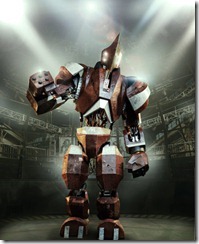
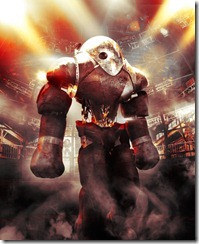
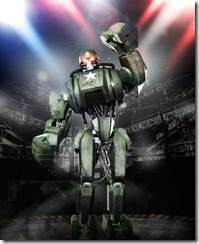
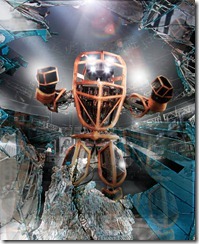
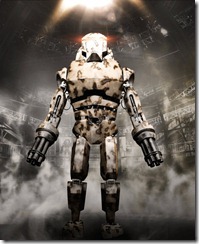
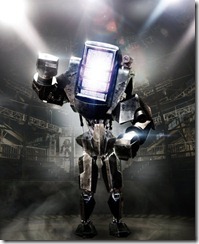
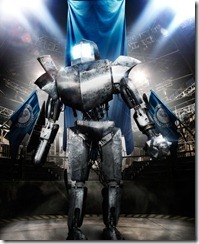
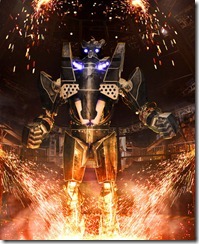

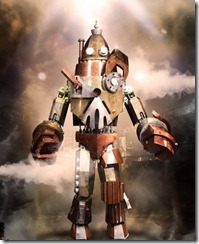
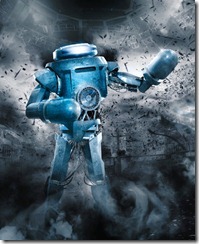

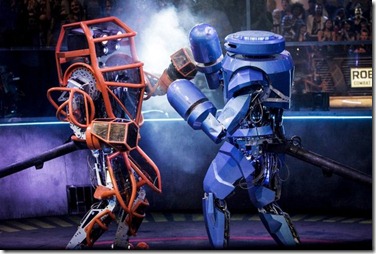
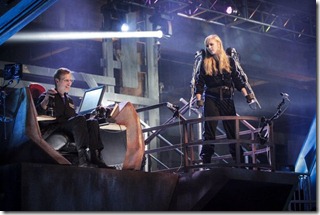
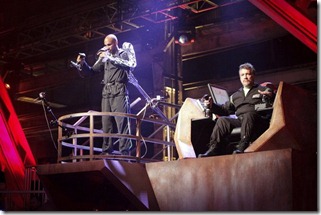
Super informative interview, (unintelligible) bits aside. I think these two’s friendship is going to play nicely on the show as well as the dynamics between teams. I can’t wait to watch this tonight and see what the heck they were actually talking about. “Lamborghini demolition derby”? Sign me right up